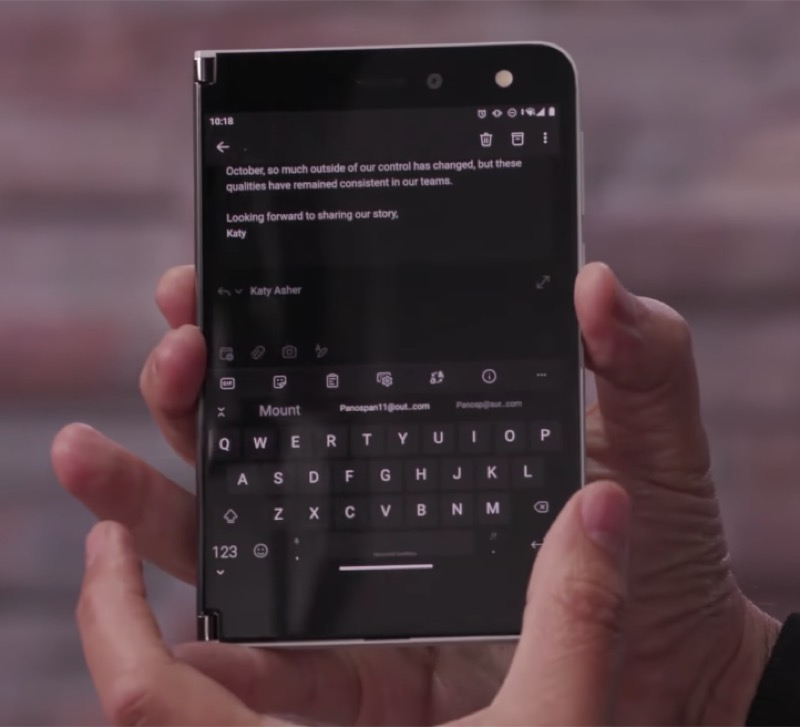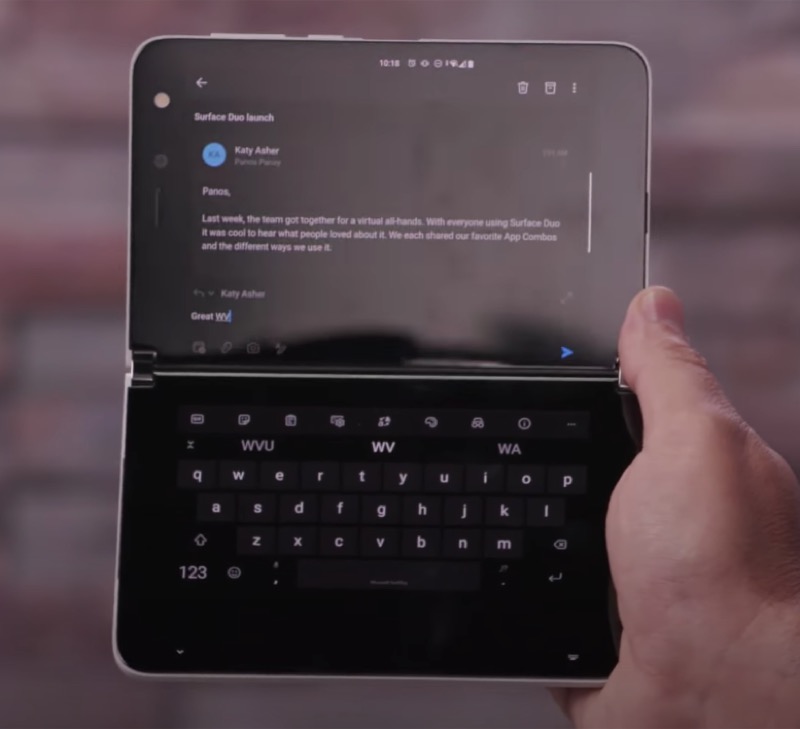In the press briefing (included for reference at the end of this feature), Panos Panay said that the Surface Duo was for 'Microsoft users and Surface fans', with the 'Android you know'. Which is a fair summary - released in limited quantities (tens of thousands at most) in the USA only, the Surface Duo is proving a point by simply existing - it's saying that this is a valid form factor for smartphone hybrids and it's trying to provoke the industry into following along. Much as it did in the PC world by copying Microsoft's initial Surface Pro designs. Microsoft hopes that Dell, HP, and Asus (etc.) will jump in and also produce dual screen hinged phone/tablet hybrids, at lower price points and - gradually - to bring the idea to the masses. And this may well happen - if the Duo had been near £700 (i.e. half the current price) then it (or a Dell/HP/whoever clone) would be a very much more attractive option.
None of this changes the initial attraction - or rather, lack of it - though. Microsoft will sell a few thousand $1400 Surface Duos to hard core Surface fans in the USA, they'll give away a few hundred more to media outlets in the country (sadly not AAWP, as we're in the UK), and then some enterprises will buy or borrow a few thousand more, at most. Add it all up and you get to less than 10,000, an utter drop in the bucket in Mobile, but enough of a data point that Microsoft can learn lessons, all while the core dual-screen Microsoft/Android experience continues to improve.
So no, there's no good news for us in Europe or the Rest of the World. We can only look on in interest (and perhaps jealousy), and hope that a Surface Duo 2 in Autumn 2021 will hit worldwide, with a more rounded spec sheet (NFC, Qi charging, 5G, and a better camera are obvious bump-ups) and perhaps a slightly lower price.
Sprinkled through this feature are some of Microsoft's new Surface Duo promo videos. 'Work smarter' is a nice tagline, with the headline feature being that you can 'do two things at the same time'. So all those occasions when, on your current smartphone, you find yourself swiping/tabbing between two apps, comparing information of copying and pasting text, these can all be accomplished simply and obviously on the Duo, since you can interact with both applications/tabs at the same time.
Which is fair enough, and a useful feature, though as with all of the 'productivity' benefits here, one has to balance up the raw hardware capability that's being compromised in order to save a few seconds here and there. So if this was your main phone then you're giving up taking great photos, you're giving up watching great media (no jack, only a mono speaker, huge bezels), you're giving up tap to pay, you're giving up an external display for notifications, and you're giving up wireless charging. Phew.
The secret then is that, for Duo '1', at least, Microsoft doesn't really intend that this be a main phone. It's assuming that you've already bought your $1000 (etc) iPhone/Galaxy flagship for all the aforementioned, and this is an extra $1400 to carry around a dual-screened productivity aid. Yes, some tasks and common operations will undoubtedly be better on the Duo, but again there's the balance against cost and having to carry around two 'phones'.
What's commendable though, is the work Microsoft has put into re-coding all its first party applications on Android. So Office, Outlook, OneNote, and so on. These 'span' the bezel well, splitting content into views which complement each other. True, the Edge browser fares less well, but that's continuous content and there's just no easy way to deal with a relatively large centre hinge.
I don't doubt all the advantages that Microsoft touts (and, again, see the embedded Duo press briefing at the bottom). But I do have one big productivity concern and that's core to getting things done: entering text. After all, if you're ploughing through email or working on a Word document or taking notes, you're going to be entering text. A lot of text.
Now, you could hook up a Bluetooth keyboard but then you're adding yet another gadget to your pockets or kit bag. So let's look at the on-Duo text input options:
- In opened mode, side by side: a mini-'swype' keyboard pops up on the relevant screen and you're expected to use the relevant thumb to trace out your message. This will be quite painful, especially if you're a right hander and the swyping is all done on the left thumb (or vice-versa). Not an option for more than a few words.

- In 'closed' mode: a traditional phone portrait mode keyboard appears and you'll type with two thumb, typically. It's a decent size because the Duo is a wide phone, even when closed, so typing will be relatively easy, suitable for a few paragraphs perhaps. But... if this is how you're going to enter text then what was the point in buying expensive Duo in the first place? Just get any large phone in 2020 and you get a similar size typing area.

- In 'communicator' mode, landscape, with one display above the other: one screen is turned into a full QWERTY keyboard. I've tried this idea on the Samsung Galaxy Fold and it works pretty well - as long as the centre of gravity is under control on the Duo (larger battery in the keyboard 'half') then this should work equally well here. Panos says that this is his primary 'posture' on the Surface Duo and I can see why - the Duo effectively becomes a mini-laptop, a 'communicator' in the traditional sense, and I can imagine multiple paragraphs of input being practical.

Of course, how well (or how annoyingly) each keyboard style fits in with your intended productivity use case depends on what you'd use the Surface Duo for. My concern is that the biggest USP of the Duo is being abe to split an application like Outlook across two displays, seeing headers and email content at the same time. But if you use the Duo in this opened out portrait form then you're stuck with the mini-wrong-thumb swype keyboards - or else face having to rotate the device into communicator mode multiple times per session to bring up the larger software keyboard.
Recapping then, I can understand Microsoft's desire to create a new product category, but there are question marks over using day to day applications and getting text easily into them, plus there's the requirement in most cases to carry around a separate flagship smartphone to cater for imaging, media consumption and biometric payment.
So, as a consumer, the Duo is still absolutely out of reach in terms of common sense and affordability. But as a geek and tech reviewer I'm still keeping a very close eye on the Surface Duo and its 'scene' over in the States - and I'll keep reporting back if AAWP is still here when the Duo gets leaked/announced.
